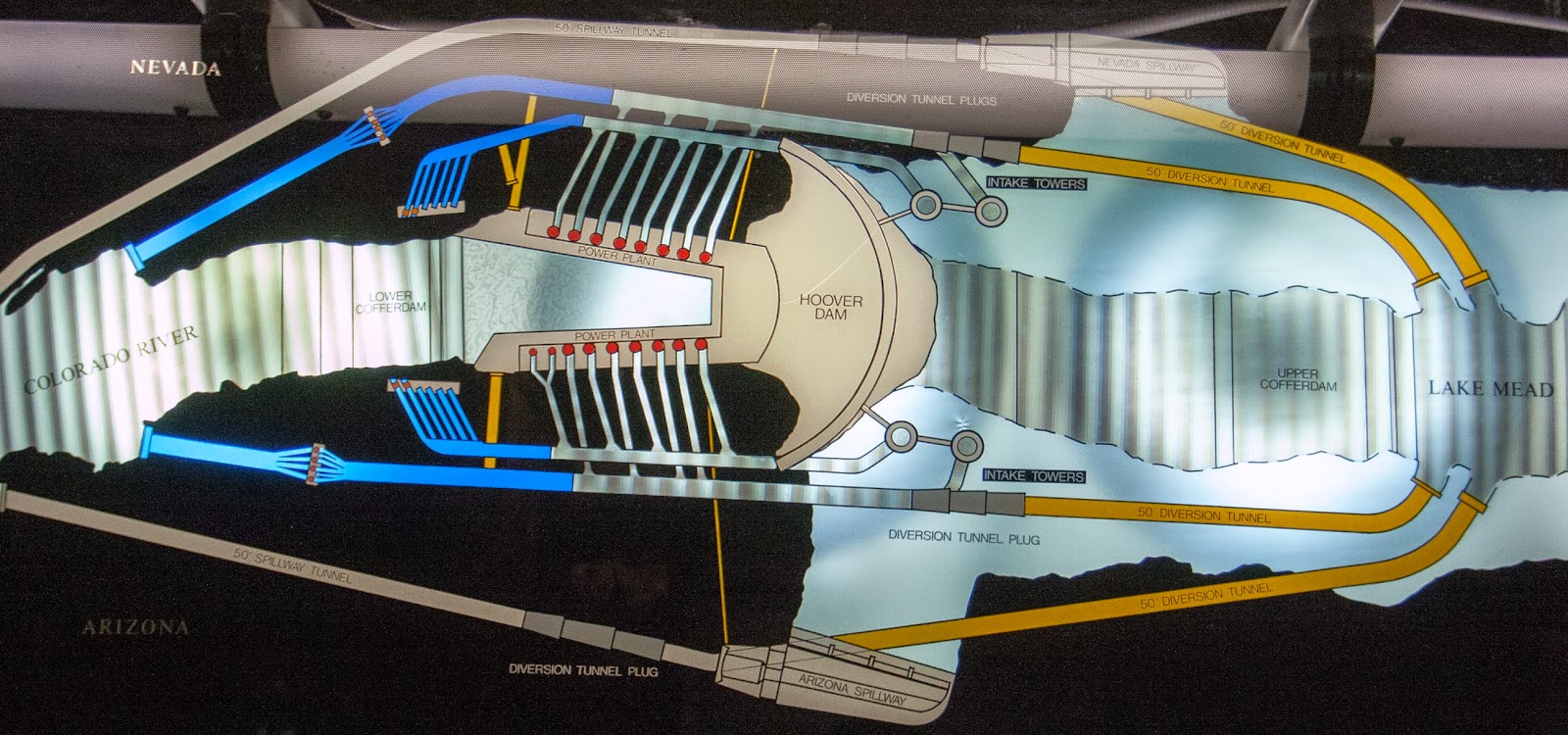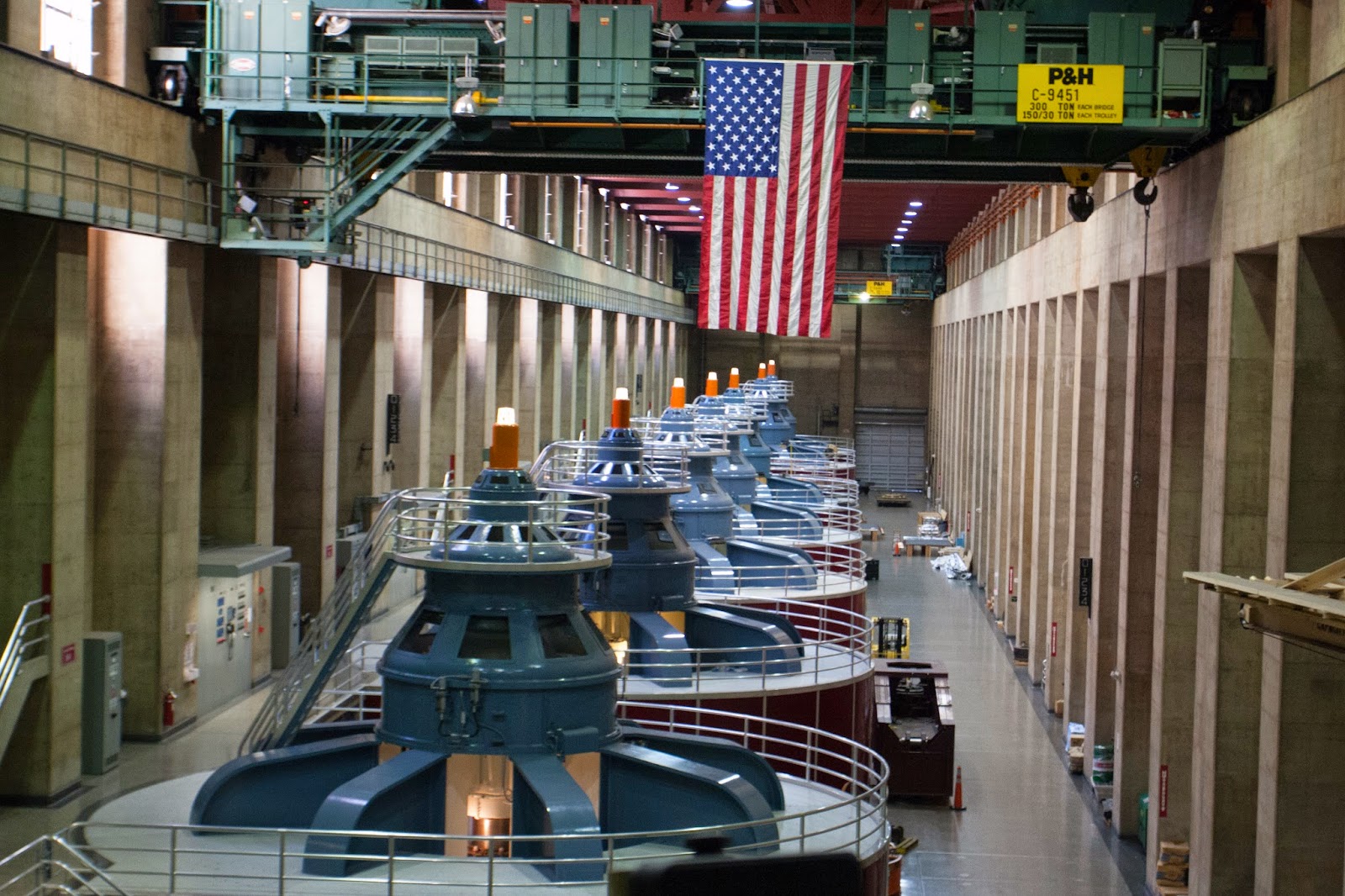Design and Construction of Hoover Dam
Hoover dam is an arch-gravity dam, a combination of two architectural styles. The dam is arched towards the upstream. The pressure of the water compresses the dam, making the concrete structure stronger.
Before the dam construction could begin, the river had to be diverted. Four tunnels were constructed for this purpose. They were 56ft in diameter, lined with 3ft thick concrete, and 4000ft long. It took 19 months to complete the construction of these.
Two earthern dams were constructed: upper and lower cofferdams. The upper cofferdam, 100ft high, was constructed to divert the water into these tunnels, around the job site. The lower dam was constructed to prevent the water from backing up into the site. After the dam was constructed, the lower cofferdam was destroyed. The upper cofferdam is still present to prevent the silt from backing up behind the dam.
Once the dam was constructed, the tunnels were sealed-off to allow the river to fill up a lake behind the dam. It took 6.5 years for lake mead to fill up completely.
The dam is designed with two spillways to prevent water from flowing over the dam. There is actually a highway running on top of the dam. The spillways are 27ft lower than the dam itself. When there is a flood situation, the river water would flow into the spillways, bypassing the dam facility and emptying back into the river down-stream.
Power Plant
The power plant has 17 generators, 8 on the Nevada side and 9 on Arizona side. Each of these generators produce 130MW of power making the peak capacity roughly 2.2GW.
A picture of the power plant on Nevada side.
A 2.4MW generator to service the dam itself.




